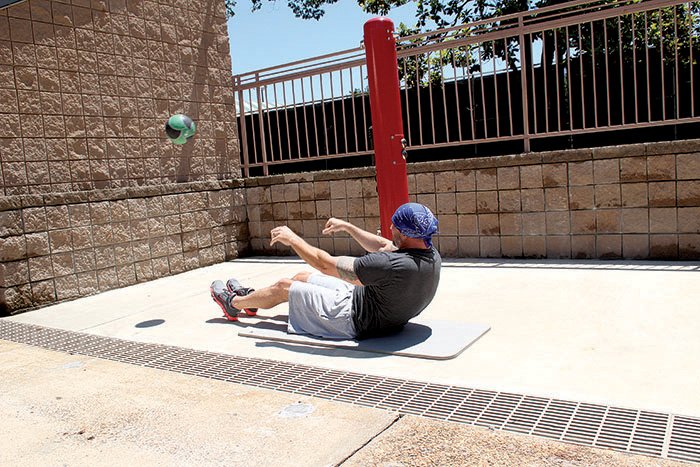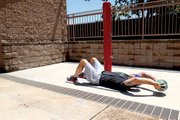The practice of “quantifying” exercise has become more popular than ever. Gone are the days of measuring energy expenditure by simply looking at the treadmill screen. Instead, the trend is to encapsulate all relevant data in one device worn on the hip or the arm.
Little computers are literally changing the way exercise is monitored and therefore, performed, in today’s fitness environments. This week, I’ll discuss some of these products and will also introduce an exercise designed for use with them.
Whether you’re trying to calculate the total number of calories you burn in a day or measure your sleep patterns, there’s an exercise tracker for you. Most of these devices are worn on the arm, wrist or hip and contain some sort of accelerometer to measure your body’s movement throughout the day. The accelerometer measures your vertical and horizontal movement and calculates caloric expenditure based on your height, weight and age.
The great part about exercise tracking is that you can obtain very precise information that will allow you to make better lifestyle choices. Basically, the idea is that knowing how many calories you burn will translate into better weight management because you’ll know how many calories you can eat without gaining weight. In theory, this makes a lot of sense. “Calories in vs. calories out” has always been a reliable method of weight management and will continue to be the case.
However, there are some critical steps to ensure that you’re using the exercise tracking device to the point that you’ll realize a true benefit. My first piece of advice is either use it 24/7 or return it. Wearing the device some of the time and tracking the information some of the time will result in uneven results that will leave you disappointed.
With these programs, it’s important to mentally go “all in” and track everything the device will allow you to track.
The other key aspect of using the device is to remember the other side of the energy-balance equation. Having a complete graphical representation of your caloric expenditure is almost worthless unless you also know your caloric intake (I’m assuming here that weight management is a program goal; it’s not for everyone). Almost all of these devices include a platform for calculating caloric intake, so make sure you use it religiously.
There are so many products on the market for tracking caloric balance these days, I won’t bore you by listing all of them. Here are a few that I have tried and so believe to be solid competitors. Nike makes a wristwatch called Fuelband that works pretty well and is also a cool-looking watch in its own right. Polar is a company that has made the best heart-rate monitors in the business for years and has recently introduced the Polar FT60, which is more for people who want training recommendations. The Jawbone UP is a neat device that connects through an iPhone application for tracking daily activity patterns.
There are plenty of options out there for fitness tracking. All of them are only as good as the commitment of the individual, so try this week’s exercise for a nice core workout and some added caloric expenditure.
Select a medium-weight medicine ball that will bounce when thrown (some don’t).
Lie on your back with your feet facing a concrete or brick wall about 10 feet in front of you.
Hold the medicine ball in both hands with your arms outstretched over your head while lying on the floor.
At this point, your body is in an “I” shape with arms and legs outstretched. If your lower back bothers you, feel free to bend your knees.
Quickly sit up while holding the ball with your arms outstretched. When you reach a full sit-up position, toss the ball against the wall so it will hit 3 to 5 feet off the ground. Throw it hard enough that it only bounces once before coming back to you.
Catch the ball and go back down into another situp.
Continue this pattern for two sets of 15 repetitions.
The Sit-up Toss will make your fitness tracking device go crazy because it’s a rigorous activity that involves a great deal of torso movement.Strength and abdominal training may be a little difficult to quantify, but I think you’ll appreciate having the ability to connect the dots of energy balance a little more easily. Enjoy!
Matt Parrott has a doctorate in education (sport studies) and a master’s in kinesiology and is certified by the American College of Sports Medicine.
ActiveStyle, Pages 34 on 05/27/2013


